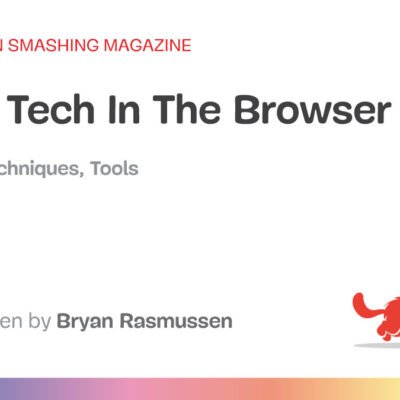In 2025, the person you just hired might not be a person at all.
Sounds dramatic? It’s not. Deepfakes have officially entered the corporate chat and they’re not here to entertain. From spoofed candidates acing video interviews to synthetic voices faking IT support calls, AI-generated deception is becoming one of the most overlooked threats in remote-first work. And here’s the kicker: most HR and Engineering teams still rely on outdated processes that trust what they see on screen.
Bad idea.
We’re in an era where identity can be fabricated at scale. Where resumes can be auto-generated, faces can be cloned in real time, and security questions can be answered by bots scraping your digital footprint. The tools are sophisticated, fast, and cheap and they don’t care about your hiring timelines or compliance checklists.
So, the question isn’t “Could this happen to us?” It’s “Would we even know if it already did?”
In this blog, we’re cutting through the hype to break down:
- How deepfakes are infiltrating hiring and IT ops
- What tech can (and can’t) do to stop them
- The real steps every remote-first company must take
Because in a world where trust is your weakest link, the smartest software development companies are already rewriting their playbook. Let’s get into it.
What Are Deepfakes and Why Should You Care?
Deepfakes used to be Hollywood-level magic, Tom Cruise doing backflips on TikTok or a politician “saying” something they never said. Entertaining? Sure. Harmless? Not anymore.
Deepfakes are synthetic media: audio, video, or images created using deep learning to mimic real people with eerie accuracy. Think AI-powered impersonation on steroids. These aren’t your average Photoshop jobs. They’re full-motion, real-time replicas that can trick both the human eye and standard security checks.
At their core, deepfakes are powered by generative adversarial networks (GANs), AI models that continuously “compete” to get better at faking reality. One model generates the fake, the other critiques it, until the output is indistinguishable from the real deal.
And here’s where things get risky:
- A fake job applicant shows up on Zoom with a stolen identity and deepfaked face.
- A synthetic voice mimics your CTO asking IT for access credentials.
- A fabricated onboarding video leads new hires to download malware.
This isn’t theoretical, it’s already happening. According to a report by Sensity AI, deepfake job scams and identity fraud incidents have tripled in just one year, targeting industries with remote teams.
Why should you care?
Because in a remote-first world, your people are your perimeter. And if your HR or IT teams trust what they see on camera without verifying what’s behind it, you’re not hiring talent. You’re onboarding a breach.
This isn’t about paranoia. It’s about preparation. The question now is: are your systems & your staff ready to spot the synthetic?
How Deepfakes Are Slipping Past HR and IT
Imagine this: You’re in a Zoom interview with a candidate. They look sharp. They speak confidently. Their background checks out. They even drop some insider lingo that makes you think, “Yep, they’ve done this before.” You give the green light.
Except… that person never existed.
Welcome to hiring in the age of deepfakes, where fraudsters can clone someone’s identity, borrow credentials, and generate a believable, real-time interview with nothing more than stolen data and an AI toolkit.
Here’s how they’re getting in the door:
Faking Faces, Voices, and Resumes
Using AI-generated video and voice synthesis, bad actors can impersonate real people or invent entirely fictional ones. With tools like DeepFaceLive or ElevenLabs, they can:
- Overlay someone else’s face on their own during a video call
- Use synthetic voices to sound more authoritative (or even mimic another person)
- Auto-generate “plausible” resumes using scraped LinkedIn data and AI writing tools
To the untrained recruiter or distracted IT manager, it’s almost impossible to tell the difference.
Spoofing Credentials and Portfolios
It’s not just what they say, it’s what they send. Fake LinkedIn profiles, GitHub repos populated by ChatGPT, even forged certifications with QR codes that appear to be legitimate can pass surface-level checks. Think your background checks are solid? If they’re not layered with digital verification and human validation, they’re not enough.
Cloning Real Identities
In more sophisticated attacks, deepfakers are stealing real identities, especially from freelancers or professionals with public-facing profiles. These are used to impersonate someone who actually exists and would pass most screenings.
Bypassing the Busy and the Burned-Out
HR teams are overwhelmed. IT is stretched thin. Remote-first hiring makes it easy to overlook anomalies, especially when everything “looks fine” on a screen. Deepfakes exploit this exact fatigue: the assumption that what’s visible is real, and what sounds competent is credible.
The Remote Work Threat Multiplier (And Why We Know It’s Real)
At ISHIR, we’ve been remote-first long before it was cool or necessary. We’ve hired, onboarded, and scaled global teams entirely through screens. And here’s what we can tell you with confidence: the remote model creates blind spots that deepfakes are perfectly engineered to exploit.
When there’s no physical handshake, no badge check, and no gut-check moment across the table, your hiring and IT workflows become entirely dependent on what you see and hear online. And in 2025, what you see and hear can be faked. Convincingly.
We’ve seen this firsthand. We’ve encountered candidates using synthetic resumes, questionable identities, and even AI-altered video calls. We’ve built systems to catch it and we’re still evolving them, because the threat evolves faster than most people realize.
Here’s why remote work makes deepfake deception so dangerous:
Screens Become the Single Source of Truth
Remote-first companies live and breathe on video calls, virtual interviews, and PDF resumes. But those can all be spoofed. If your entire process trusts what’s coming through a webcam, you’re not hiring, you’re hoping.
No In-Person Verifications = More Risk
In a physical office, there are hundreds of small validation moments: face-to-face interviews, casual hallway conversations, ID scans. In remote setups, those are gone. And without layered identity checks, bad actors slide right through.
Gaps Between Tools, Teams, and Vendors
We use third-party tools for background checks, onboarding, and device provisioning, just like everyone else. But unless those vendors are AI-aware and proactively checking for deepfakes, they become weak links in your chain.
Speed Creates Vulnerability
Remote hiring often moves fast. We’ve felt the pressure to onboard quickly for high-demand roles. But moving fast without AI-first identity checks is like building a rocket without testing the engine, it’s only a matter of time before it crashes.
Fighting Deepfakes With Tech That Actually Works
Let’s get one thing straight: you can’t outsmart deepfakes with gut instinct alone. In 2025, AI-powered deception requires AI-powered solutions. But not all tools are created equal. Some are built for forensic labs, others for real-world HR and IT workflows.
Here’s our list of Top 4 deepfake detection tools that are leading the charge
1. Reality Defender
Best for: Real-time detection in live video interviews or streams
Strengths:
- Built to run in real-time across web apps
- Detects facial manipulations, voice fakes, and visual artifacts
- Integrates with Zoom, Google Meet, and custom video tools
Weaknesses:
- Requires strong internet and GPU power for smooth detection
- Pricing is enterprise-first
2. Sensity AI
Best for: Enterprise threat monitoring and digital risk assessment
Strengths:
- Continuously scans the web for impersonation attempts
- Strong dashboard for risk scoring and threat intel
- Great for protecting executive identity and brand misuse
Weaknesses:
- More of a monitoring system than a point-of-hire screening tool
- Not ideal for small teams just looking to verify candidates
3. Microsoft Video Authenticator
Best for: Quick authenticity checks on pre-recorded videos
Strengths:
- Assigns a confidence score to indicate how likely a video is manipulated
- Backed by Microsoft’s deepfake detection research
Weaknesses:
- Doesn’t work in real-time
- Struggles with high-res, professionally edited deepfakes
- Tool availability is limited depending on region and partner access
4. Intel FakeCatcher (emerging)
Best for: Academic-grade analysis of facial blood flow (yes, really)
Strengths:
- Uses biological signals to detect fakes (like heart rate changes)
- Over 90% accuracy in early tests
Weaknesses:
- Still experimental for most business use
- Hardware requirements make it impractical for HR-scale deployment
Namita Take: Multi-Factor Human-AI Stack
Use deepfake detection tools like these in combo with:
- Live challenge-response questions during interviews
- Secure document verification platforms
- Internal team training to spot behavioral inconsistencies
How to Deepfake-Proof Your Hiring and IT Ops (Starting Today)
Tools are great. But tools alone won’t save you. To build a truly deepfake-resilient remote organization, you need smart processes, trained people, and systems that assume deception is possible, because it is.
Here’s how forward-thinking companies (like ours) are raising the bar and staying a step ahead:
Use Multi-Factor Identity Validation
Don’t stop at a resume and a Zoom call. Add layers:
- Verified ID checks using platforms like Onfido or Jumio
- Cross-referencing public profiles (LinkedIn, GitHub) with metadata
- Dual-channel communication (email + phone/video) to verify consistency
Why it works: Deepfakes may fool the camera, but they struggle across multiple verification types. Make identity a multi-lane checkpoint.
Add Live Challenge-Response During Interviews
Ask candidates to:
- Hold up a specific object
- Perform a gesture (blink twice, look left/right)
- Answer an off-script question in real time
Why it works: Synthetic media stumbles when asked to respond dynamically. Real people don’t.
Blend AI Screening With Human Judgment
Use AI to detect red flags, voice inconsistencies, video artifacts, suspicious behavior patterns, but don’t automate trust.
Train your hiring managers to:
- Review AI alerts, not blindly accept them
- Ask follow-up questions if something feels off
- Flag anything “too perfect” or “too scripted”
Why it works: Deepfakes are designed to pass passive filters. You need engaged, skeptical humans in the loop.
Train HR and IT Teams Like It’s a Security Threat (Because It Is)
Deepfakes aren’t just an HR problem. They’re a business continuity risk. Everyone in your hiring and tech stack needs basic threat training:
- What deepfakes look and sound like
- How social engineering exploits your hiring funnel
- What to do when something doesn’t feel right
Why it works: Most attacks succeed because someone assumed “this isn’t my problem.” Make it everyone’s problem and train accordingly.
Key Takeaways (And How ISHIR Stays Ahead of Deepfake Threats)
Deepfakes aren’t tomorrow’s problem, they’re today’s reality. Remote-first companies that still rely on visual trust and outdated hiring playbooks are exposing themselves to real, scalable risk.
Here’s the new rulebook:
- Don’t trust what you see, verify what you don’t.
- Layer AI tools with human judgment.
- Train every team like security depends on them, because it does.
At ISHIR, we’ve engineered our Staff Augmentation services to be deepfake-resistant by design. As a fully remote, AI-literate organization, we combine multi-step identity verification, continuous vetting powered by human and AI insight, and trained recruiters who know exactly what synthetic fraud looks like. With real-time monitoring and performance checks embedded in delivery, you’re not just scaling your team, you’re securing it.
Because in 2025, the right people aren’t just hard to find. They’re hard to fake.
Are deepfakes blurring the lines between real and risky hires?
ISHIR’s AI-aware Staff Augmentation services help you build secure, high-performing remote teams.
The post Can Deepfakes Fool Your HR or IT Teams? What Every Remote-First Company Must Know in 2025 appeared first on ISHIR | Software Development India.





